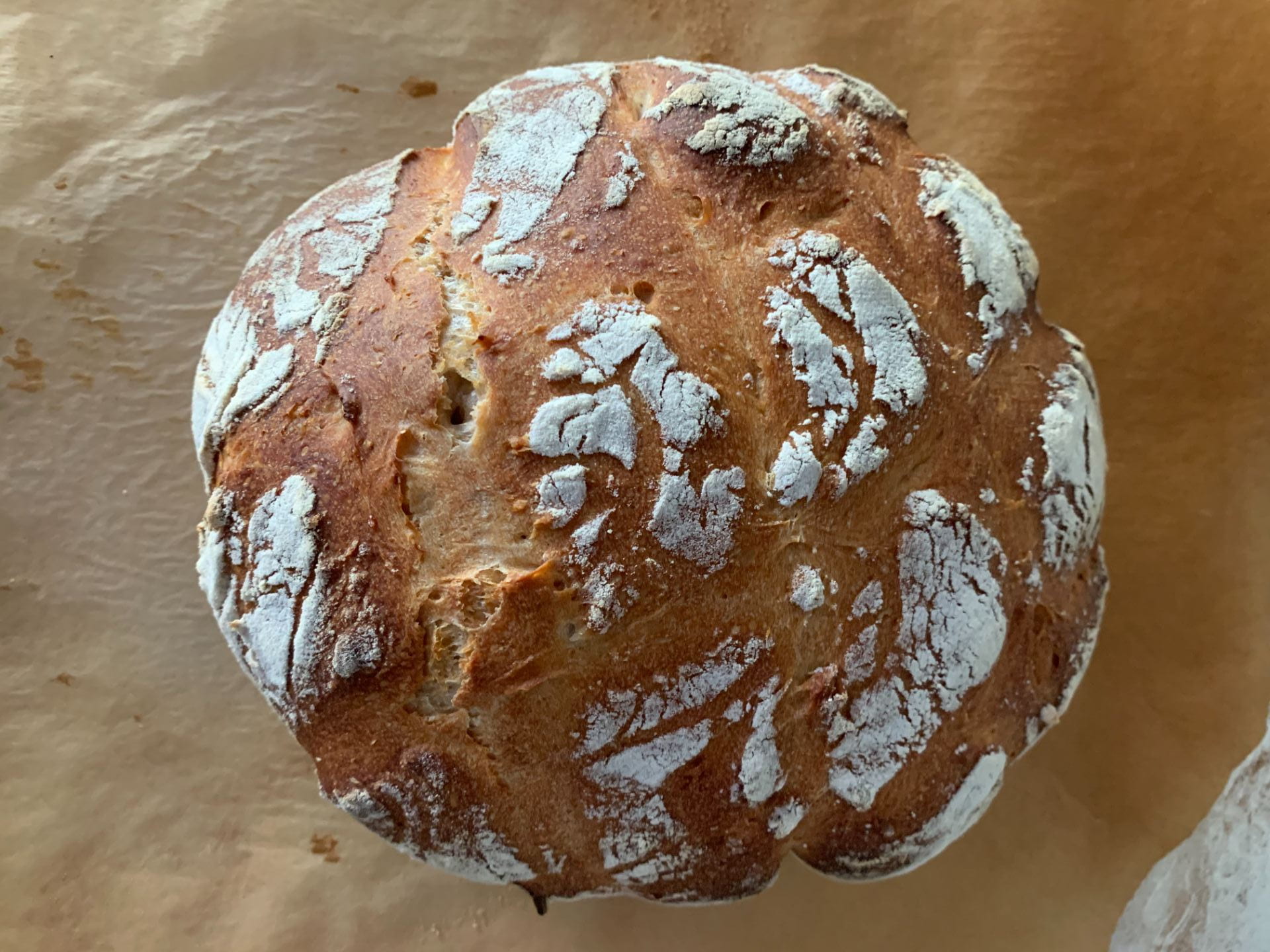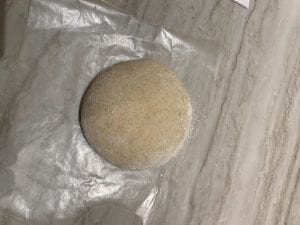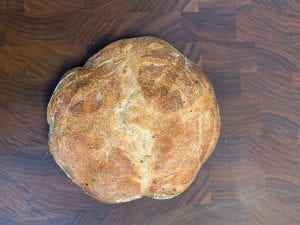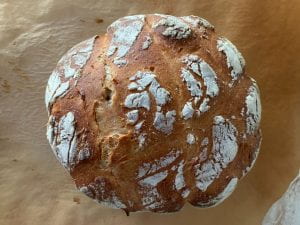Project by: Clara Cornick (9th Grade)
Project Advisor: Daniel Li
Student(s)’s Advisor(s): Jeanette Ng
Description of the Project:
During this project of trying to figure out how to make the perfect loaf of sourdough bread, I hope to learn the science behind baking. I want to figure out what adding more or less baking soda and powder will do to my tasty creation. I want to take this on because I have always loved baking however, I have never put much thought into the background of it. I feel that something so beloved to me should be something I grow to know and understand.
I will think critically about the significance of different ingredients and how they can change the roots of my bread.
My proposed outcome to this project is to bake my way to the perfect sourdough bread. I will be able to demonstrate this successfully by showing pictures and writing about how I changed my ingredients as I went along in this project. I will most likely make a poster with my transformations that includes writing.
In between each update, I am assuming that I will make 1-2 attempts at sourdough. The goal for my final project is a little different than usual because whatever my outcome is, I’m assuming that it will be better than the first I made. If that is so, I have succeeded with my work.

The science behind it all:
For my honors project, I embarked on an assignment to learn more about sourdough. I have a lot of experience with baking, however, I haven’t experimented with bread.
My initial research told me that I need to purchase a sourdough starter kit. A sourdough starter is necessary to cultivate the yeast in a form that you can use for baking. I put the starter in a mason jar and added flour and water. I covered the jar tightly with plastic wrap. I waited 12 – 24 hours and then repeated the process for at least 4 days. After 4 days the sourdough starter can be used to make sourdough bread. The starter becomes a solid where yeasts and lactic acid bacteria grow vigorously, the yeasts producing enough carbon dioxide to leaven a loaf of bread
To make the actual bread you combine flour, water, salt and a third cup of the sourdough starter. Flour contains high levels of gluten and when water is added to the flour they form a bond held together by hydrogen. When you knead the dough it activates the gluten protein and strengthens the dough.
Flour also contains starch which are long chains of connected sugar molecules. The yeast provides enzymes that help convert the flour to glucose. This process plays a big part in the flavor of the bread and forming the bread’s crust.
When you leave the dough to ferment, I learned that yeast helps convert sugars in the bread mix into carbon dioxide. The bubbles formed in the dough are what cause the bread to rise. Kneading the dough makes it grow in size.
The lactic acid produced by bacteria and wild yeasts can sometimes give a sour taste (giving it the name of sourdough).
Finally, when I baked the bread I learned that the fats weaken the gluten network, giving a softer bread.
Final Reflection on Learning:
Overall, throughout this project, I had a great time exploring new aspects of baking. I learned that my use of sourdough starter, flour, salt, and time all had important parts in making “The Perfect Sourdough.” I came to the conclusion that in order to get that perfect taste of sourdough you have to add A LOT of salt. Along with that, you really have to trust the process. If you are impatient, like me, you have to stick this one out. It is extremely important to allow the bread to rest and rise many times a day, along with feeding the sourdough starter every twelve hours for at least four days! I highly recommend everyone to attempt to bake their own sourdough, and maybe even use some of my tips given above (in the QR code).
Update on Progress from Weeks 1-3 (include any photos or video if relevant):
During the last week, I have completed my first batch of sourdough bread! As the week progressed it was important that I kept feeding my sourdough starter. This was extremely time-consuming and many instructions were confusing. However, yesterday I finally was able to assemble the dough which took all day due to the rising time between each step. I ended up with two loaves of sourdough! I had my family rate it on taste and looks. Along with that, I wrote notes on what to improve for next time. The average rating for looks was 7.1/10 and the average rating for taste was 7.8/10.
Update on Progress from Weeks 4-6 (include any photos or video if relevant):
During weeks 4-6, I have been learning and feeding my sourdough starter! I have been feeding this current starter for around two weeks now and finally baked it today. Recently I have been working on the science behind the sourdough starter. From my research I learned that just about any microbe can grow on this rich, new energy source, including spoilage bacteria. I was shocked by learning this but continued to find out that by days 10 to 14, the starter has settled into a stable state where yeasts and lactic acid bacteria grow fast. This is what makes the yeast produce enough carbon dioxide to leaven a loaf of bread. It would certainly be much easier to go and buy yeast from the store, but the point of this project was to take a step back and dig deeper into my research. When making this second batch of sourdough I noticed a few new things. First off, my dough didn’t rise nearly enough which I was originally worried about. However, the final product came out perfectly. Along with that, the sourdough starter had an acidic smell which concerned me. I’m still not sure what that was but as far as I know, it didn’t make a difference. I continued to write notes on what I can improve on in the future. I had my family rate it and these are the averaged results. The average rating for looks was 8.3/10 and the average rating for taste was 7.1/10.
Update on Progress from Weeks 7-9 (include any photos or video if relevant):
During weeks 7-9, I finished my last batch of sourdough bread. This time around I decided to duplicate the amount of salt and add sesame seeds for a bit more flavor. This batch was much easier than the ones before because I was able to use my skills to improve on my baking. I knew what needed work and I fixed them as well. I decided for this batch I would feed the sourdough starter every 24 hours instead of every 12 hours. I think this helped a lot because it gave the dough more time to rest and rise. The final product was very good. The average rating for looks was 8/10 and the average rating for taste was 9.2/10.






